Grandmother Judith

The old United States census records of my paternal grandmother, Ragnhild Judith Nordhus, document her birthplace as “Bergen” Norway. But when I began researching the details of her early life, I discovered that she was actually born in Fjersberg, a small village on one of the many, small, forested islands that spread out among the glacier carved fjords just northwest of Bergen proper. I never realized until I was well into adulthood that the nuanced and sensitive gifts that were part of my grandmother’s personality and life had also been passed on for me to use in my own.
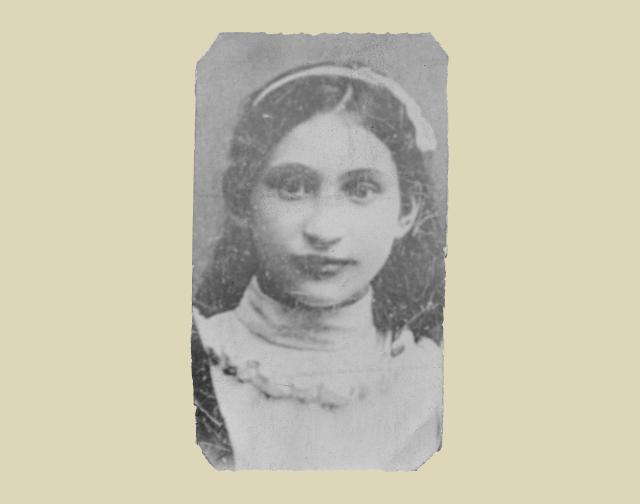
“Big City” Bergen had for centuries been a thriving international shipping center for markets as far away as England, Portugal and Italy. But by the mid 19th century, many ships leaving Bergen also began carrying a new cargo: the rural Norwegian immigrant families who were bound for America, encouraged by government promises for homestead claims or jobs in lumber towns or textile mills.
My grandmother’s family was among those who relocated from rural Norway to one of these small, lumber industry, “company” towns in western Wisconsin, next to the Minnesota border. They followed the immigration model that many 19th century ethnicities favored. First, the fathers left to establish connections and find housing and work in the new land. Later, their families joined them. Judith, her mother Ragnhild, and her younger brother Nils most likely came to Wisconsin according to this plan. Judith was fourteen and, like her mother and brother, spoke no English when she arrived. But since so many of their new neighbors in Wisconsin were also Norwegian immigrants, at first it hardly mattered.
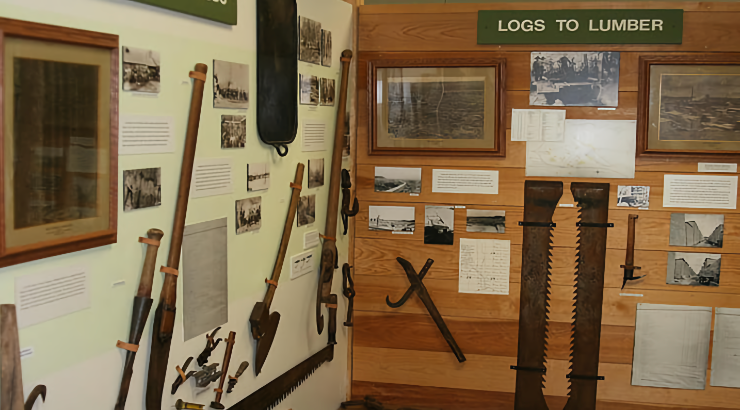
My father never spoke about either of his parents the entire time I was growing up. I was always mystified by this incomplete silence, because he had spoken to me a few times about the hardships he faced alone or with his brother during the Depression. As a child I remember thinking: where were your parents when you lived on the street with your brother? But I never asked. That subject was closed.
In my early 50’s after my father died, I learned more details about Judith’s personality and history from my 80-year old aunt, my father’s sister. One of the things that caught my attention was her remembrance of her mother Judith as “the most gentle, loving, and mild-mannered person she had ever known.”
After Judith arrived in Wisconsin as a beautiful 14-year old, there must have been many opportunities for her to be visible with her parents at dances, christenings or wedding events in the larger logging town community. And as was often the custom in that era, her parents soon received a wedding proposal for their gentle, loving, mild-mannered—and also dutifully compliant—only daughter. The proposal came from an older, successful French Canadian builder (my grandfather) who likely knew Judith’s father through the lumber business. As my aunt described it in her phone call to me many years later, my grandfather begged Judith’s parents to allow him to marry her. And since his offer also came with promises of financial security, by the age of 15, Judith was married off and pregnant with her first child. I still mourn the reality that her delicate and sensitive soul was exchanged as a commodity for material benefit only.
She joined thousands of other rural women in the early 20th century whose occupation was listed on government census records as “keeping house” or “housewife.” As she grew older, Judith soothed and protected her children, baked the “best bread” (according to my aunt) and cared for the garden and fruit trees that nearly every rural household in that era valued for survival. Her loving character is apparent below in a family photo taken around 1932 that shows (from left to right) her mother, Ragnhild, her daughter Audrey, Judith holding baby Helen, and her oldest daughter Margaret.
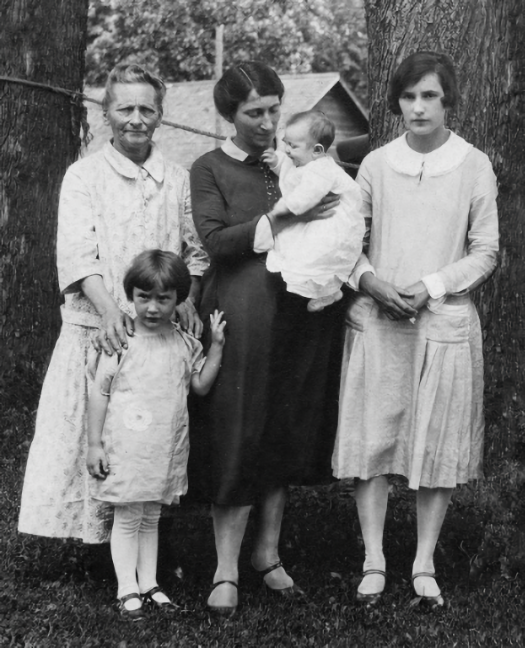
Of all the female ancestors I honor in this “homage” section of my journal, I feel the deepest psychic connection to my grandmother Judith, partly because I inherited her dark hair, slightly Asian-appearing eyes and high cheekbones, as well as her serious demeanor. But her genes also passed on another gift to me two generations later: the exquisite, receptive, and deeply communicative tactile sensitivity of her hands.
One way this gift of tactile sensitivity expressed itself in my life was through my talent for playing the violin. Violinist Itzhak Perlman always joked that playing the violin was like “playing an instrument by braille,” by the power of a heightened sense of touch alone, that could instantaneously regulate the placement and angle of the fingertips to produce emotional feeling and intonation via their split second communications with the brain.
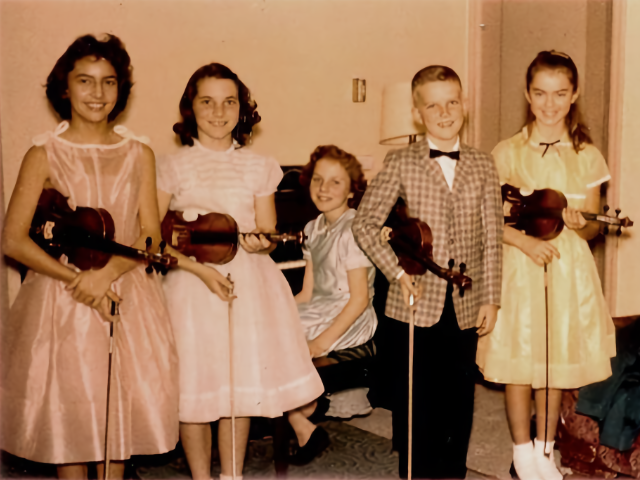
Until my conversation with my 80-year old aunt in my early 50’s, I had no idea that a talent for violin playing had existed in my grandmother’s family long before I was born. Judith’s younger brother Nils inherited this talent, and likely brought his violin (or “fiddle” when the instrument is used for folk music) with him from Norway when he arrived in Wisconsin. As an adult he played both traditional music for local Norwegian community events as well as the waltzes, polkas and other dance tunes that were part of the popular music repertoire of the 1920’s and early 1930’s.
But when the Depression arrived, Nils's previously appreciative audience judged him harshly for “not having a real job!” My aunt told me with a sigh that he was so deeply hurt by this evaluation that he “put his violin away and never played again.”
The following video features an example of the style of traditional Norwegian dance music that my great uncle Nils might have played for one of the new land wedding receptions:
Although I was grateful to receive a talent for music-making through my grandmother Judith’s lineage, the most important application of her “sensitive touch” gift to me appeared during my 35-year career as a medical massage therapist. Thanks to her palpable legacy, I was able to do valuable and practical work I loved that was perfectly attuned to my existing ability to provide soothing and healing touch to others, even complete strangers. The added advantage was that this skilled work helped financially support my “other life” as a visual artist.
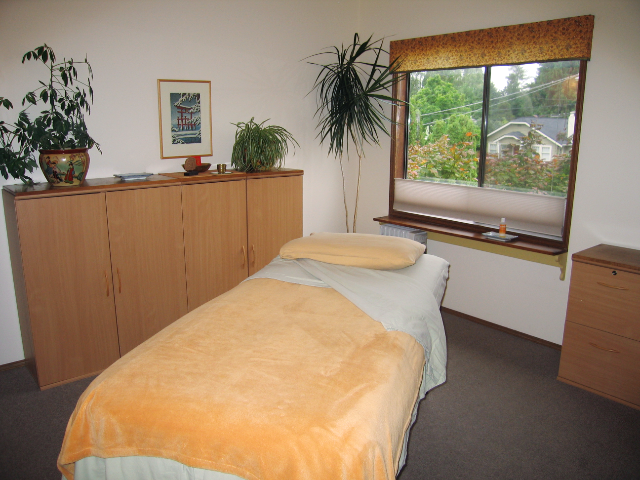
I never thought much about the effect that my grandmother’s gift of comforting touch had on my own clients until the afternoon when one of my “regulars” brought in her 82-year old Bosnian mother for a treatment. Since her mother didn’t speak English, her daughter stayed in the room while I was working. Suddenly, in the middle of my treatment, her mother woke up on the massage table where she had been drifting in and out of an alternative state between light sleep and wakefulness. She turned her head towards her daughter a few feet away and relayed something to her in Bosnian. When I asked her daughter to translate her mother's comment, she laughed and replied, “She said that you have hands that can raise the dead!” I thank my grandmother for that.
I never knew my grandmother Judith, but her spirit is still alive within me.
In the following poem, so evocative of the time in which she lived, I picture her in my mind on a day when life was not so hard, and I replace the word “envy” (in the first line) with “honor."
Answers
by Mary Oliver
If I envy anyone it must be
My grandmother in a long ago
Green summer, who hurried
Between kitchen and orchard on small
Uneducated feet, and took easily
All singing fruits into her eager hands.
That summer I hurried too, wakened
To books and music and circling philosophies.
I sat in the kitchen sorting through volumes of answers
That could not solve the mystery of the trees.
My grandmother stood among her kettles and ladles.
Smiling, in faulty grammar,
She praised my fortune and urged my lofty career:
So to please her I studied – but I will remember always
How she poured confusion out, how she cooled and labeled
All the wild sauces of the brimming year.
My grandmother Ragnhild Judith Nordhus died alone, abandoned by my grandfather, while giving birth to her 13th child in 1933, at the age of 44.
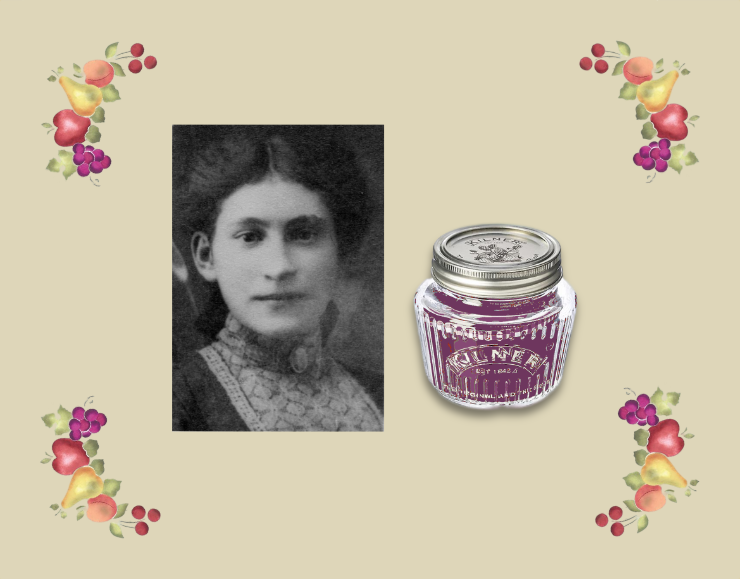




Member discussion